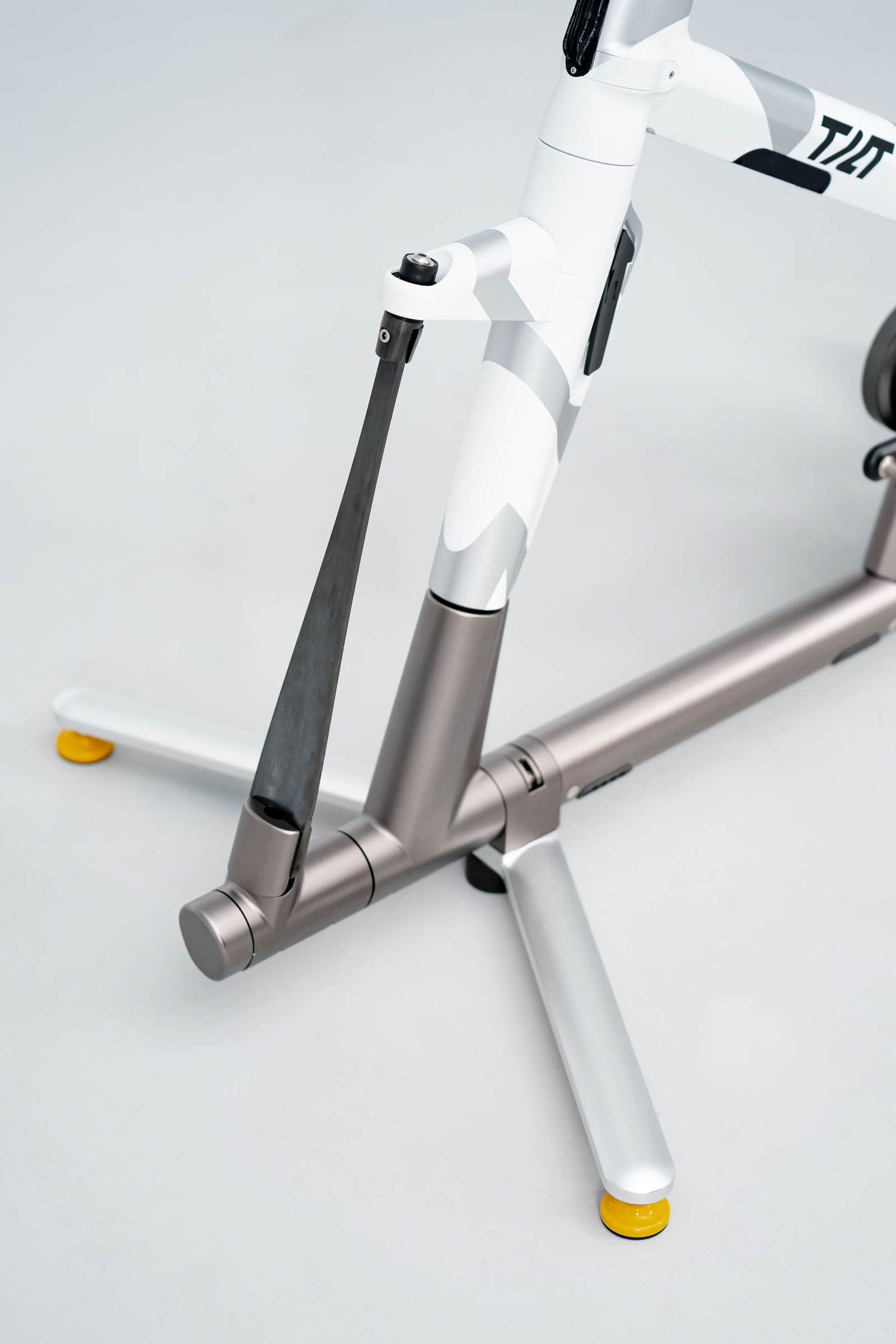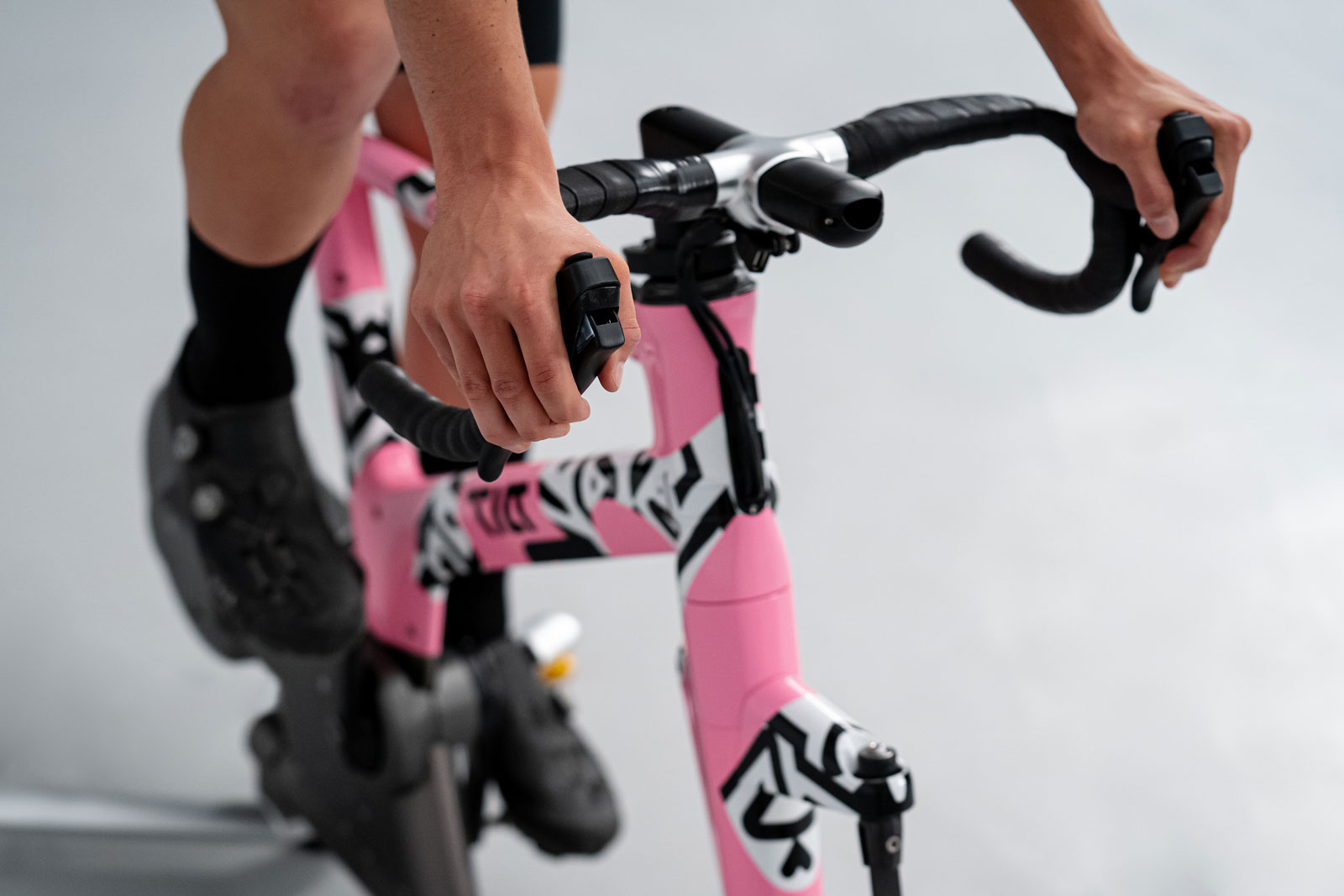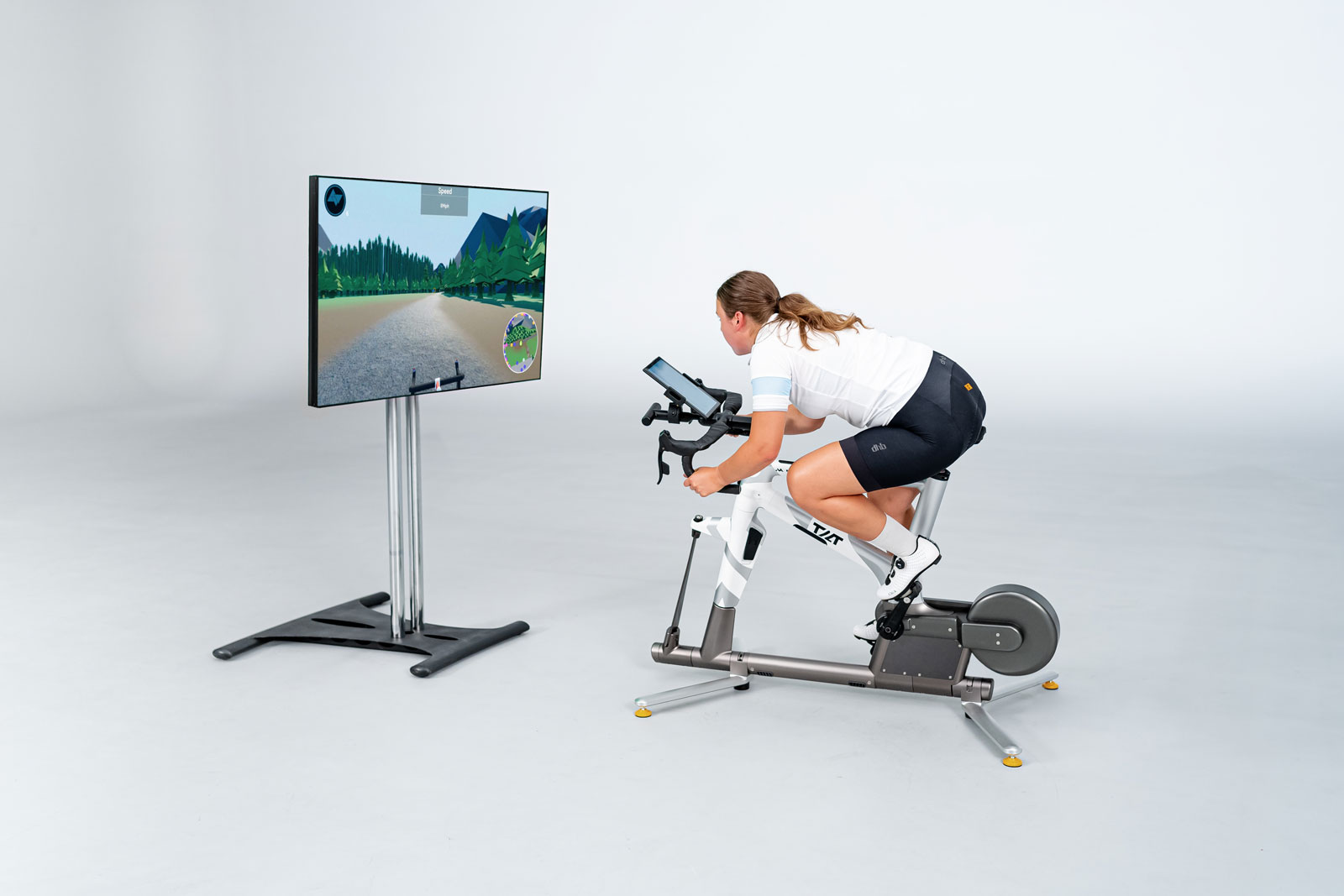The Muoverti TiltBike is a new, immersive stationary indoor training bike for riders who want their at-home workouts to simulate their on-road (and off-road) rides in almost every way. The supposed “real feel” stems from its unique rider-tuned, elastomer-guided lateral frame rotation. The TiltBike is designed to be used as the controller for Zwift, TrainerRoad, and thanks to the steering, tilt, and braking sensors, E-Sports platforms such as Descenders, too. The Muoverti TiltBike is to be exhibited at Rouleur Live this week, but here’s a quick preview of what’s to come in 2022.
Muoverti TiltBike
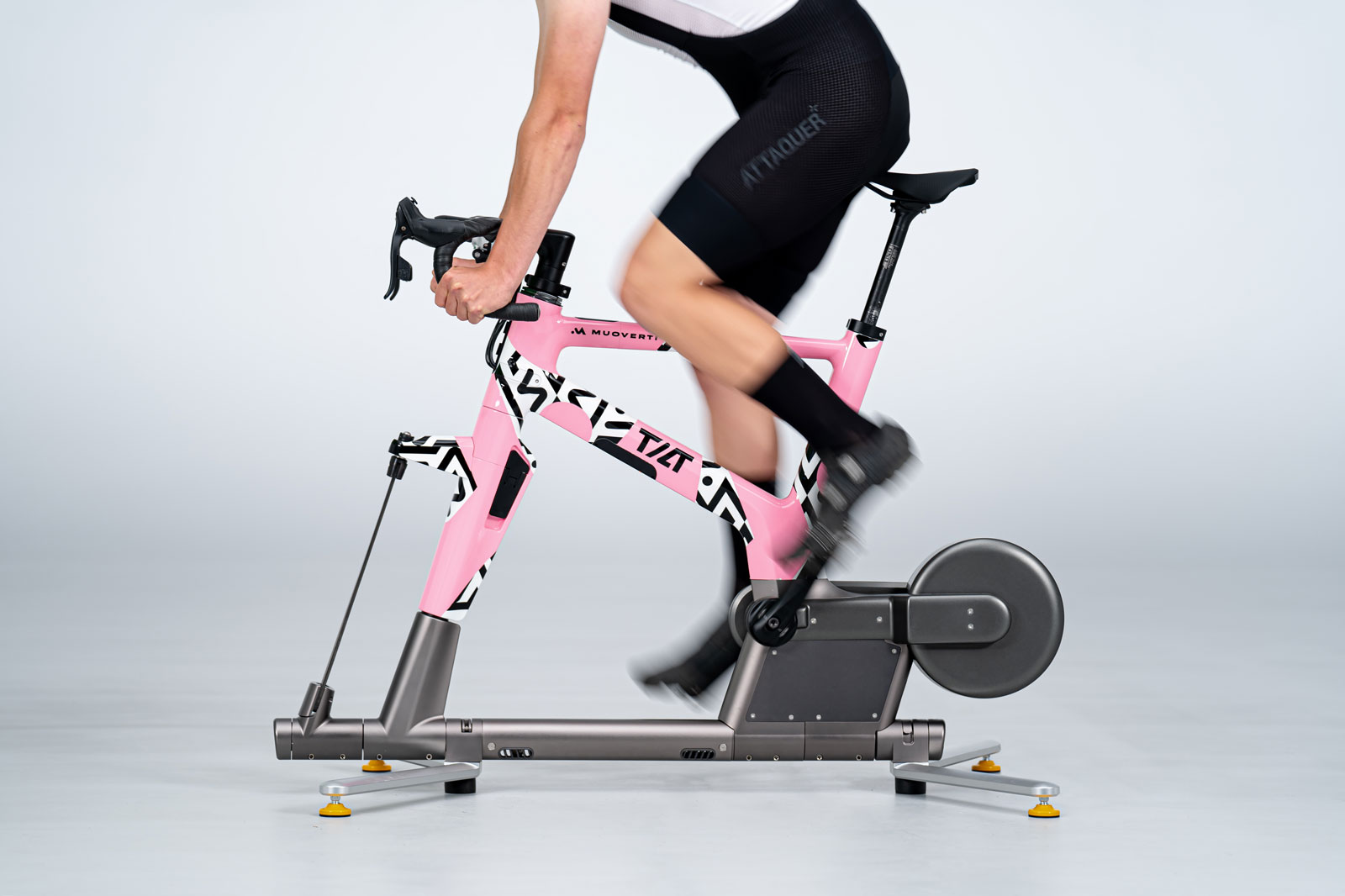
While there are numerous indoor trainer platforms that allow the rider to exercise some semblance of on-road balance, we’re unaware of any that are quite so integrated and immersive as the Muoverti TiltBike. Most are merely rocker platforms that you place your indoor trainer on top of; these have a massive footprint and generally take some time to fettle with and set up correctly. The TiltBike is sort of like a standalone trainer and a rocker platform combined, and a heck of a lot more than that too.
We don’t have many details as of yet, but it seems the lean angle, and ease with which the bike leans, can be tuned according to the rider’s weight, just as the inflatable balls underneath the KOM Full Motion Rocker Plate can be pressure-tuned to the rider’s preferences. The TiltBike is said to use elastomer-guided lateral frame rotation to achieve this, so presumably, it is the elastomer that can be swapped out to tune the lean characteristics.
Irrespective of how that lean characteristic is tuned, the key point here is that tilt data, along with the steering, braking, and of course, pedaling data is integrated to allow the TiltBike to be the controller of your avatar across many different virtual training and E-Sports platforms.
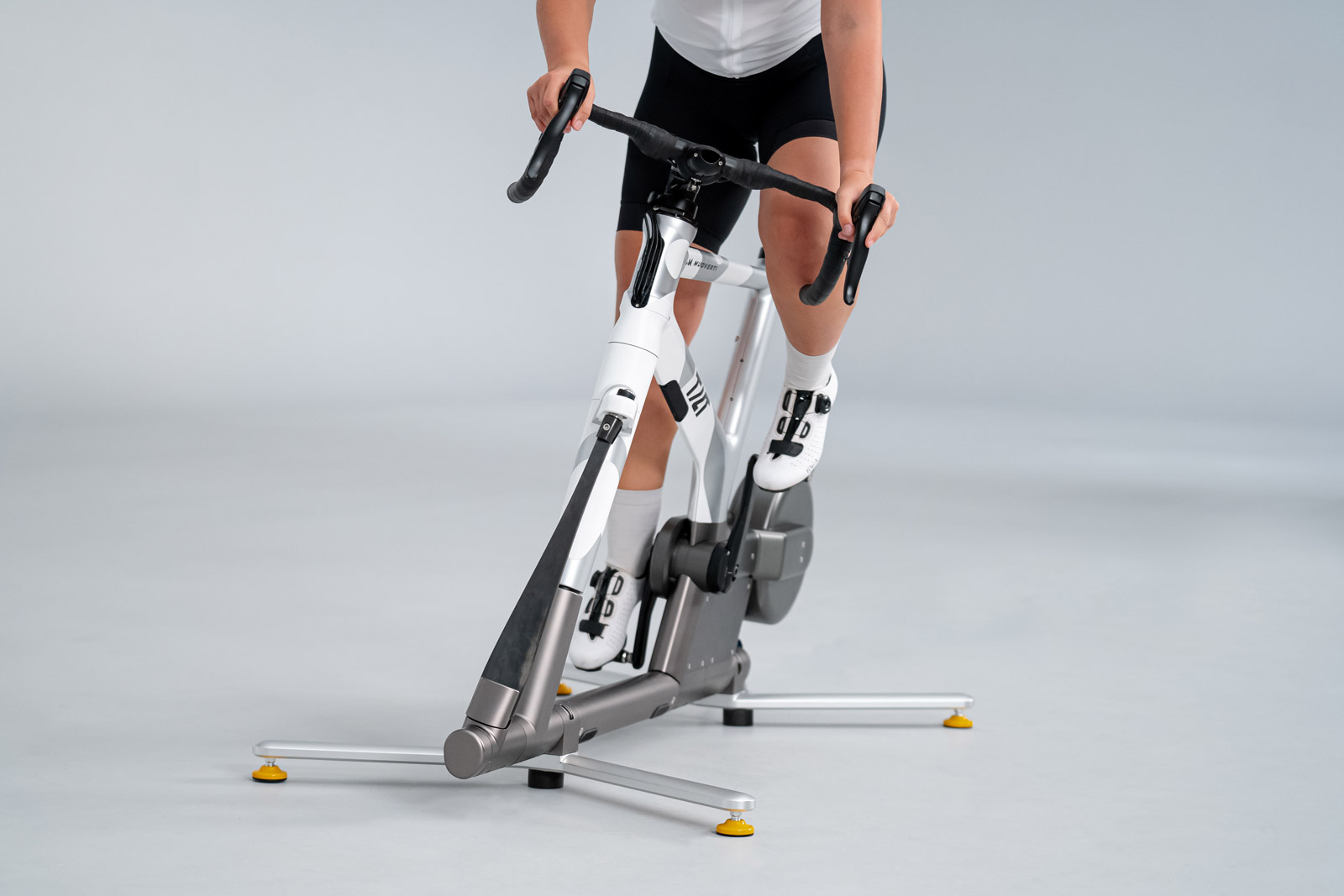
Muoverti says their system uses a dynamic electromagnetic resistance control and physics engine to algorithmically replicate the feeling of physical forces such as rolling resistance, incline, weight, acceleration, braking, and inertia. The algorithms are said to update 1,000 times per second, in constant communication with the resistance control resulting in highly accurate feedback from digital training and riding platforms.
Magnetic resistance is connected to the cranks via a carbon belt drive, said to make for a virtually silent riding experience.
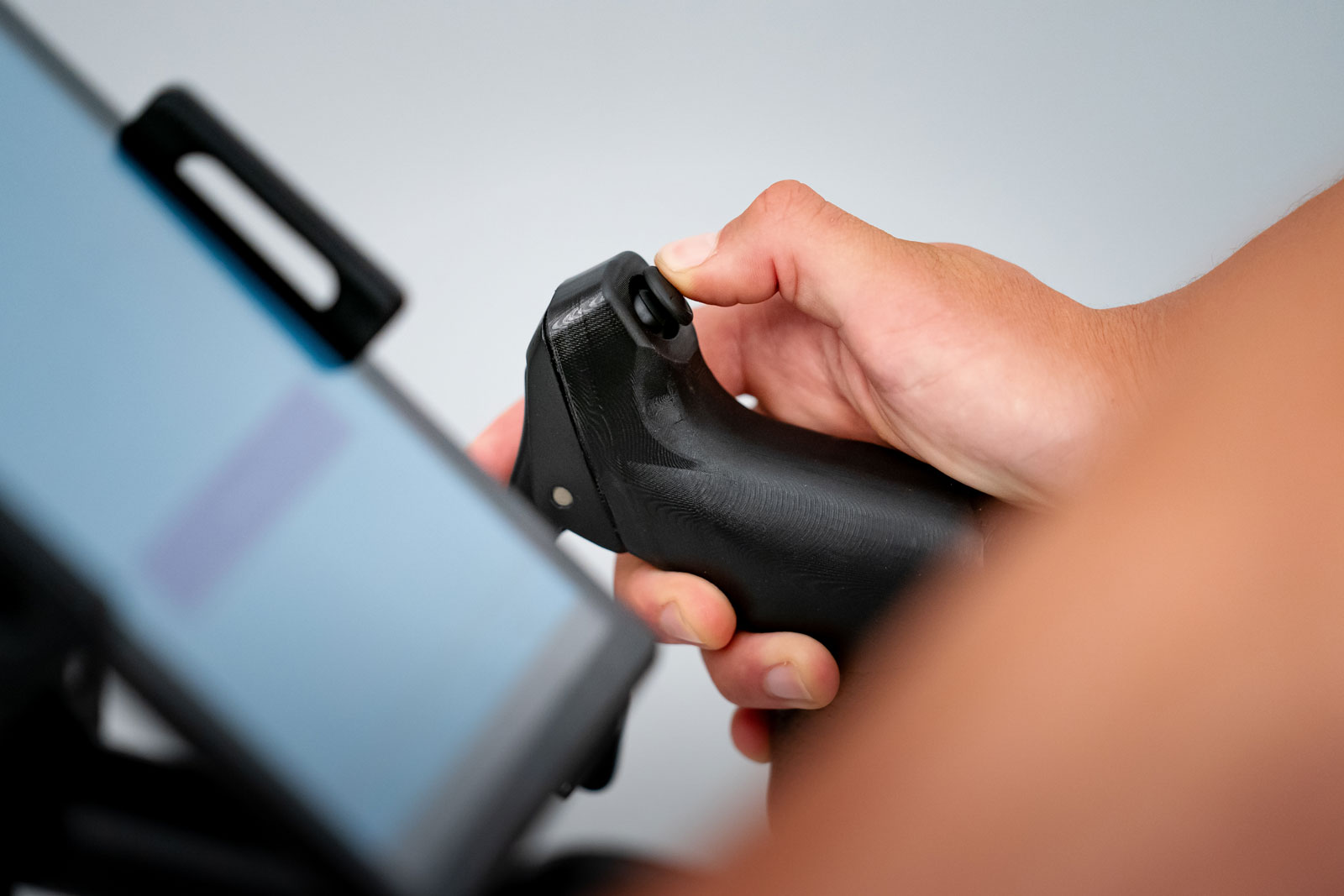
The TiltBike allows the rider to view ride data including power, speed, cadence, L/R balance, pedal smoothness, torque effectiveness, lateral force, and even seated vs standing readings; all are provided in real-time without any need for additional sensors.
Of course, fit can be customized to suit riders of differing heights, as well as tuned to a mountain bike, road, or gravel geometry. A traditional quick-release seat post clamp is included for saddle height adjustment, while a standard rail clamp allows riders to install their preferred saddle. The TiltBike gets a patented adjustable stack and reach handlebar, as well as adjustable length cranks. Overall, the adjustability allows for geometry from frame sizes 49 to 64.
The Muoverti TiltBike is due in 2022, but we have no idea on the price yet! Watch this space.
